The result is breathtaking. Shorter, wider and lower than a Panamera, it actually looks like a four-door 911, a perception the Panamera never really managed to achieve. At 1.3 m tall, it is just a couple of centimeters taller than the 911, and together the expressive 1.99 m in width ensures an enviable pose. Contributing to the excellent proportions and pose, the Mission E comes with massive 21″ front and 22″ inch wheels.
The contours are familiar, typically Porsche, almost like an elegantly elongated 911. But the set of different stylistic solutions that we found in the definition of the parts, whether LED optics or the care taken in the integration of aerodynamic paraphernalia, all wrapped up in a bodywork with clean lines and sophisticated modeling of its surfaces, takes us to a more futuristic context. .
Touted as a future rival of the Tesla Model S, the Mission E is, however, presented by Porsche as a true sports car where propulsion is guaranteed not by the combustion of hydrocarbons, but by the power of electrons. The two electric motors, one per axle and technically similar to the Porsche 919 Hybrid, the winner of this year's Le Mans edition, provide a total of 600 hp. With four-wheel drive and steering, it also promises the agility of a sports car, even considering the two tons of weight.
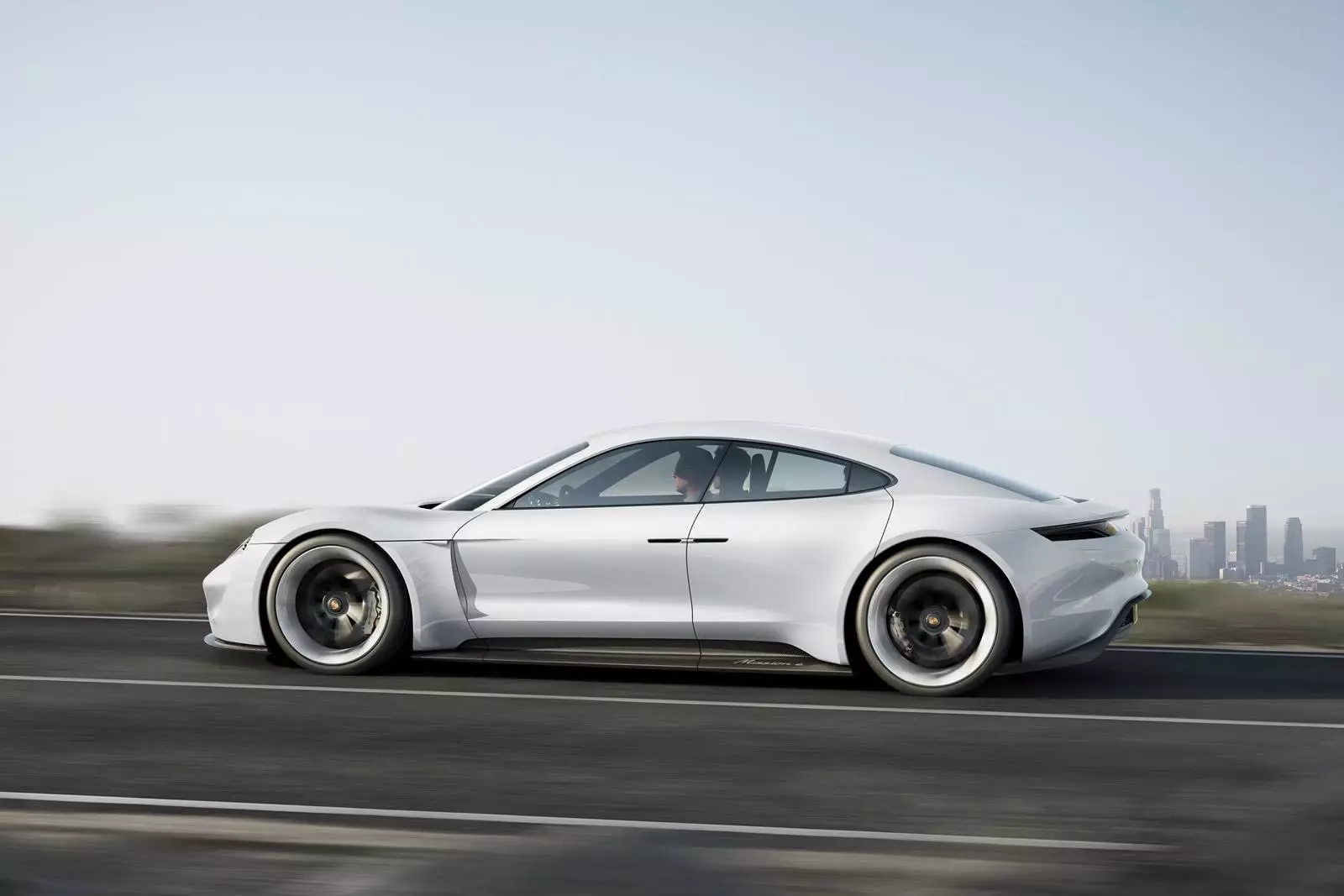
performance
Despite the emphasis on performance, the ones that are announced fall short of the absurd (in allusion to their Ludicrous mode) Tesla Model S P90D. However, 100 km/h in less than 3.5 seconds, and less than 12 to reach 200 km/h are numbers that clarify the Mission E's potential. mentioned and Porsche reports a time of less than eight minutes per lap.
Also ensuring superior agility, the Mission E's center of gravity is similar to that of a 918 Spyder. This is only possible due to the specific platform they used, which does not need a central transmission tunnel, allowing the batteries to be placed as close to the ground as possible. These are Li-ion, making use of the latest advances in this field, and are positioned precisely between the two axes, contributing to a perfect mass balance.
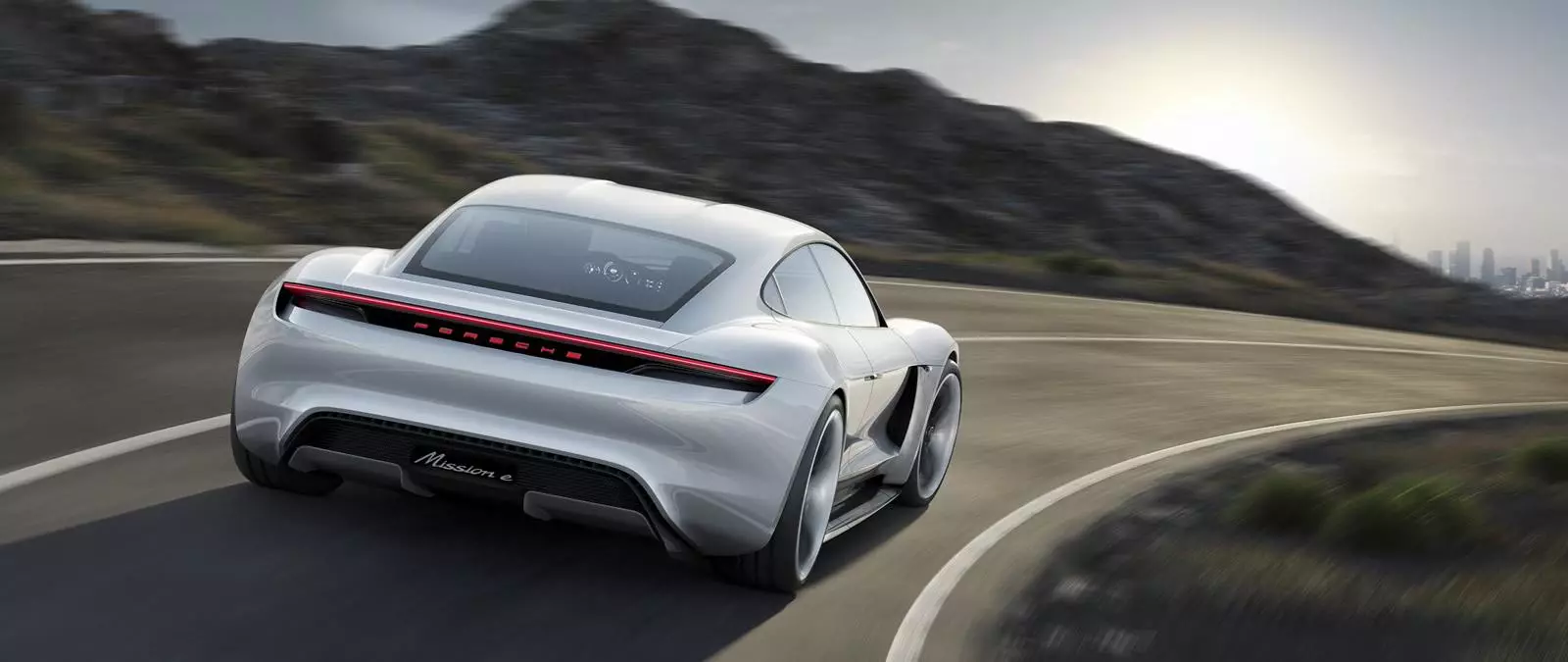
"Turbo" charging
In electric cars, autonomy and battery recharging are central to their — future — acceptance, and the bar is raised thanks to Tesla's efforts. The more than 500 km of autonomy announced slightly surpasses those announced by Tesla for its Model S P85D, but the trump card of the Mission E could be in its “supply”.
Recharging times are currently too long, and even Tesla Superchargers need at least 30 minutes to guarantee 270-280 km of autonomy. The Mission E, thanks to an unprecedented 800 V electrical system, doubling Tesla's 400 V, provides enough energy in 15 minutes for 400 km of autonomy. If Tesla has a Supercharger, Porsche would have to have a Turbocharger, which gives its system its name: Porsche Turbo Charging. Jokes with the meticulous choice of names aside, battery recharging time could be a decisive business factor.
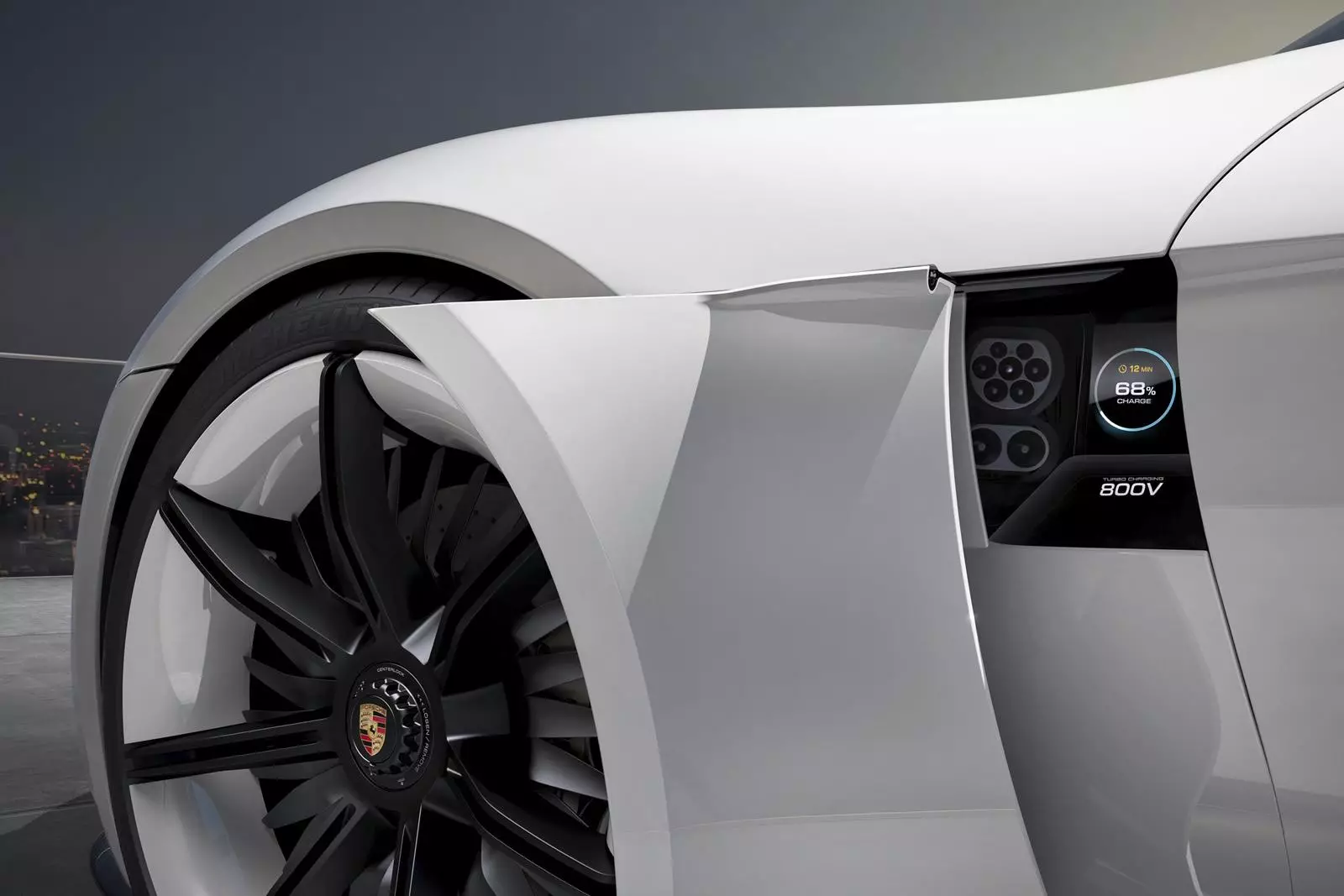
interior
The electric future, according to Porsche, is not limited to the exterior and electric propulsion. The interior also reveals the growing and complex levels of interaction between us and the machine.
When opening the doors, you notice the absence of the B pillar and the suicide-type rear doors (they will never lose their fame). We find four individual seats, defined by seats with a distinctly sporty cut, quite thin and, according to Porsche, also quite light. Like the Tesla, the electric propulsion allowed not only to free up interior space, but also to add a luggage compartment at the front.
The driver of the Mission E will find an instrument panel that is totally different from other Porsches, but also something familiar from the look of it. The classic five circles that shape Porsche's instrument panels are reinterpreted using OLED technology.
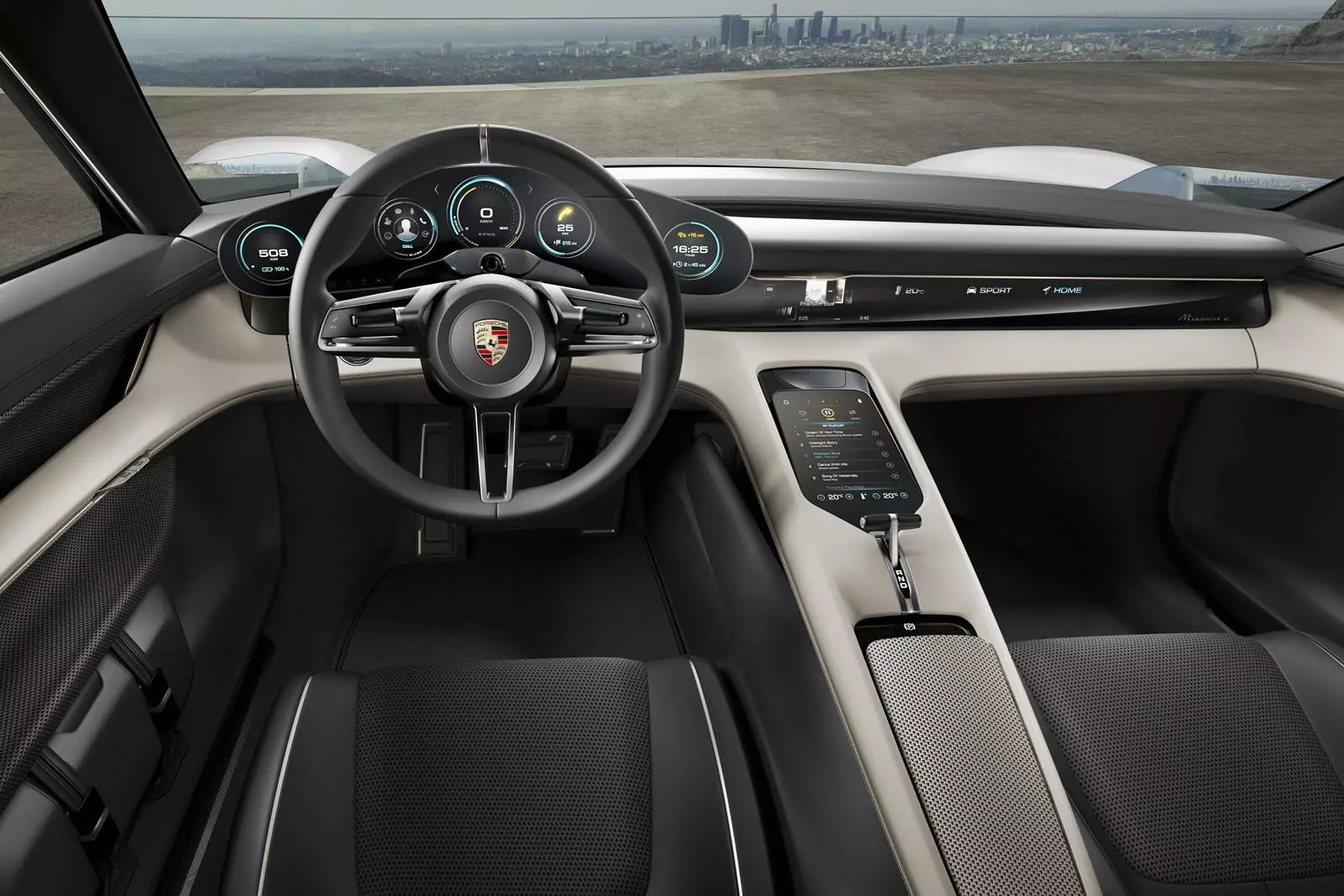
These can be controlled in an innovative way through an eye tracking system. Just look at one of the instruments, the system knows where we are looking and, through a single button on the steering wheel, allows us to access the menu for that particular instrument. This system also allows for constant repositioning of instruments depending on the driver's position. Whether we sit shorter or taller, or even lean to one side, the eye tracking system lets us know exactly where we are, and adjusts the positioning of the instruments so they're always visible, even when turning the steering wheel. can cover part of the information.
As if this system didn't impress, Porsche adds control of various systems, such as entertainment or climate control through holograms, by the driver or passenger, using only gestures without physically touching any controls. Something worthy of science fiction, some will say, but they are solutions just around the corner, lacking to demonstrate their real effectiveness in the real world.
Some of these solutions may still be a bit far from their implementation, but, definitely, Mission E will give rise, it is estimated that in 2018, to a 100% electric model. For Porsche, an absolute and unprecedented debut for the brand. It will not only help it meet tight future emissions regulations, it will allow the brand to present a rival to Tesla's impactful Model S, and which will in turn help validate the new, tiny Tesla as yet another premium rival.
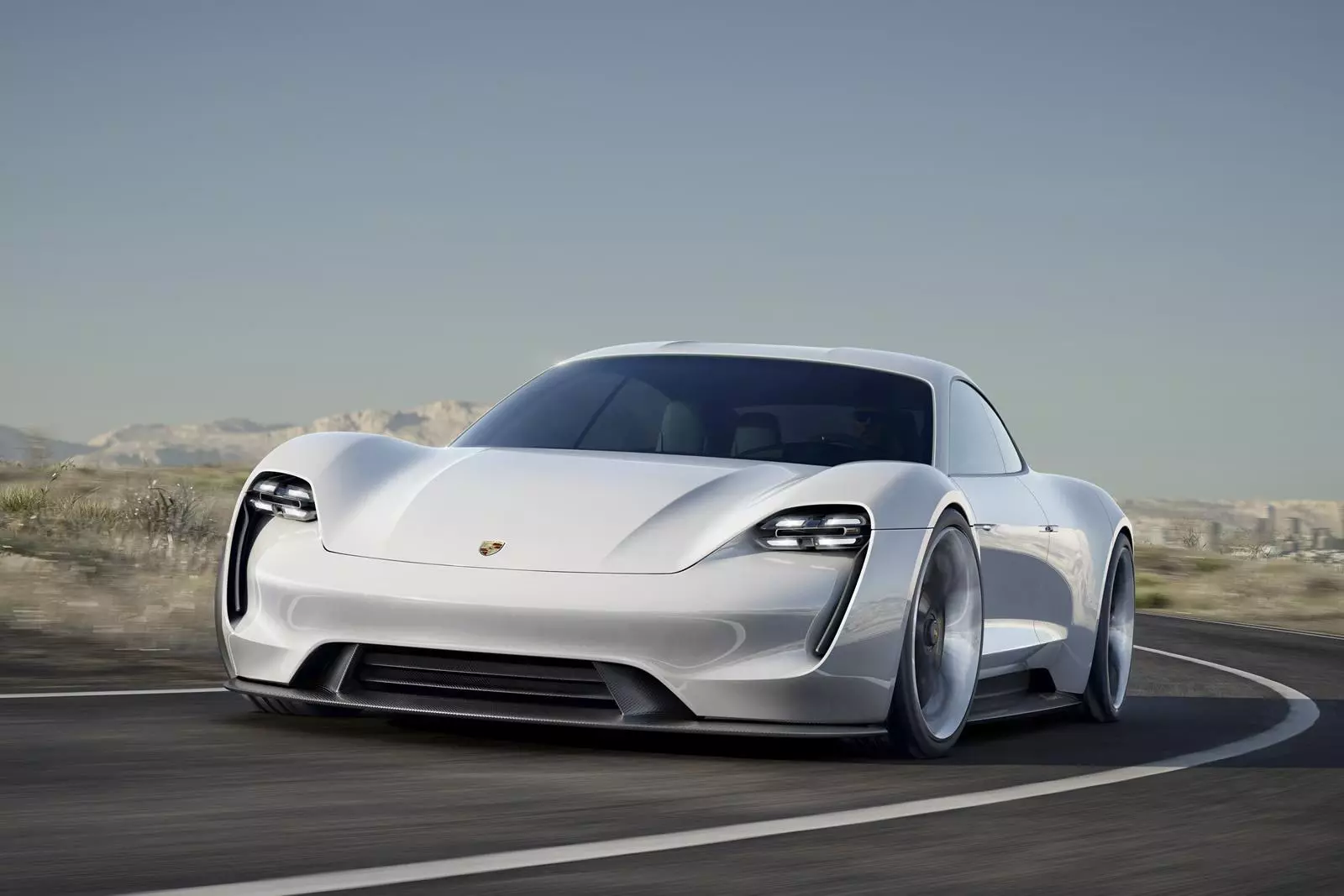
Porsche Mission E
